Germanic four-wheel drive all-wheel drive armored cars from the Second World War. Part of 3. The family of heavy armored cars Sd.Kfz. Xnumx
In 1940, the Wehrmacht’s command developed requirements for new four-wheel-drive all-wheel drive vehicles based on the Sd.Kfz.231 (8-Rad) armored vehicle. New cars should have a monocoque body (i.e., all-welded, the Sd.Kfz.231 body was attached to the frame) and a more powerful engine better adapted to the hot climate conditions. The firms Buessing-NAG, Friedrich Schiechow and Daimler-Benz (guided by Buessing-NAG) in accordance with this task began to design. The first two prototypes were made by November 1941 of the year, and 8 of June of the following year began testing an improved model of an armored car. The chassis of the new car was given the designation ARK.
A new series of cars received the designation schwerer Panzerspahwagen Sd.Kfz.234 (heavy armored Sd.Kfz 234). From Sd.Kfz.231 (8-Rad), these machines differed with streamlined shapes and low silhouette, had an increased supply of fuel and thickness of armor, as well as more powerful engines with improved performance. Initially, it was planned that the monthly release will be 5 machines with a gradual increase to 30 units. In June, 1943 was ordered 80 machines and 120 engines. Order for another 300 armored vehicles arrived in the second half of 1943. In total, from September 1943 to March 1945, the 478 heavy Sd.Kfz 234 armored cars of various modifications were produced.
Despite its apparent resemblance to its predecessor, the Sd.Kfz armored car. 234 was a new machine and had significant structural differences. The main difference was the use of a self-supporting body instead of a support frame as in Sd.Kfz.231. All eight wheels of the car drive managed. In this case, the suspension is partially independent, each of the wheels with the body was connected by simple rocker arms. The vertical stroke of the rocker arms was absorbed by the polyeliptic spring installed inside the housing. Each wheel was equipped with an air brake. On the Sd.Kfz.234 armored car, they installed larger wheels with low-pressure tires and self-tightening rubber.
On machines of this series, as well as on the predecessor, diesel engines Tatra with air cooling were installed. This was due to the fact that these heavy armored vehicles were supposed to be used in the North African theater of operations. For the same reason, the power reserve was significantly increased and powerful dust filters were installed. The highly economical V-shaped 8-cylinder diesel engine Tatra 103 developed the power of the 2250 HP at 210 rpm. The speed of the vehicle on the highway could be 80 km / h with a power reserve of 900 km. Suspension and powerful engine allowed on rough terrain to overcome ditches 1,35 meter wide, walls 50 cm high, and also to force the ford to 1,2 meter without preliminary preparation.
The Tatra 103 engine was installed in the back of the armored car. The transmission to the three-speed gearbox was carried out using a dry clutch. Thanks to the use of the differential, Sd.Kfz.234 could move at the same speed forward and backward and switch to the field motion mode. In order to increase survivability, the machines of this series, like the Sd.Kfz.231 armored cars, had two control posts (the second driver was part of the crew for controlling the vehicle).
The body of Sd.Kfz.234 was formed from flat armor plates, installed at rational inclination angles to the probable direction of firing. The thickness of the armor was: forehead - 30 mm; feed and board - from 8 to 10 mm, tower - to 30 mm. Frontal armor provided protection against anti-tank guns and 20-mm anti-tank artillery. In addition, to increase the armor in front of the case, an additional 8-mm armor plate was installed.
The interior of the heavy Sd.Kfz.234 armored personnel carrier was divided into two compartments - the engine was in the rear, and the front compartment was a fighting compartment with a rotating turret. To observe the road, the front driver had a single observation hole, closed in combat conditions by an armored hatch with a hole of small width. Similar holes were made in the side walls of the housing. In addition to the observation hole in front of him, the rear driver had an additional hole in the left side of the hull. In front of the front driver's seat on the right housed an emergency hatch.
At the height of the second driver's seat on both sides of the hull were located exit hatches, closed by kromalerami that were placed in the upper part of the hatches.
Heavy Sd.Kfz 234 armored car was produced in four versions differing mainly in the turret and the weapons used:
Sd.Kfz.234 / 1 - reconnaissance armored vehicle armed with a MG 34 machine gun and a 20 mm KwK20 or KwK38 cannon. The armament was installed in a rotating hexagonal turret open at the top, unified with Horch Sd.Kfz.222 biaxial light armored vehicles. The top of the tower, as a rule, was covered with a wire mesh, which protected against hand grenades. Subsequently, the gun was replaced with a 20 mm aviation MG 151/20 gun with a high rate of fire. This gun was adapted for firing at air targets (when picked up on a special machine). Weight Sd.Kfz.234 / 1 - 11500 kg. Overall dimensions: length - 6000 mm, width - 2400 mm, height - 2100 mm. Crew - 4 people. FuSprGer A or FuGer 12 SE was installed as a radio station. 200 units were built.
Sd.Kfz.234 / 2 “Puma” - the most famous German heavy armored car during the Second World War. Recognition for this machine came thanks to the successful combination of significant firepower, vitality and mobility. On this modification, an armored tower (30 mm in front, and 14,5 mm on the sides and rear) was installed, the Daimler-Benz tower, originally intended for tank VK 1602 Leopard. A 50-mm 39-gauge KwK1 / 60 cannon was installed in the turret, originally intended to be mounted on the PzKpfw II Leopard reconnaissance light tank. Since the Sd.Kfz.234 / 2 turret was smaller, a muzzle brake was installed on the cannon, reducing the recoil of the gun. To the right of the gun was mounted machine gun MG 42 caliber 7,92 mm. The angle of fire of the gun was 360 degrees horizontally, and -10 .. +20 degrees vertically. Gun ammunition - 55 rounds (28 fragmentation and 27 anti-tank), machine gun - 1950 rounds. A sub-caliber projectile of this gun weighing 1,09 kg at a distance of 1000 meters pierced armor 44 mm thick (armor penetration at 100 meters increased to 89 millimeters). Three grenade launchers fired with smoke bombs were mounted on both sides of the tower. In both hatches of the tower there were periscopes of circular visibility. On these machines, FuSprGer A or FuGer 12 SE was installed as a radio station. The cars were equipped with two antennas - a “panicle” in the nest located behind the tower on the left side of the hull and a 2 meter long pin in the back of the tower. Weight - 11740 kg. Overall dimensions: length - 6800 mm, width - 2400 mm, height - 2280 mm. Crew - 4 people. 101 armored vehicles Sd.Kfz.234 / 2 "Puma" were released.
Sd.Kfz.234 / 3 is a self-propelled unit based on the 234 / 1 and designed to replace the SdKfz 233. The main armament of the self-propelled Sd.Kfz.234 / 3 is the KwK 51 gun of the 75 caliber mm with the barrel length of the 24 caliber. As in Sd.Kfz.233 (8 Rad), the gun was installed in a low-profile cabin open at the top of the staff behind an armored caravan. Sector horizontal shelling was 24 degrees. Subsequently, this howitzer in military repair depots, due to the inability to fight the enemy’s tanks, was replaced with the 40 caliber 75 anti-tank Cannon. Ammunition 50 shots. Quite often, the gun was complemented by a machine gun on the pivot. Weight - 11500 kg. Overall dimensions: length - 6000 mm, width - 2400 mm, height - 2100 mm. Radio station - FuSprGer A. Crew - 4 person. Before 1945, 88 units were produced.
Sd.Kfz. The 234 / 4 is a self-propelled unit armed with an 40 caliber 75 anti-tank cannon mounted in an open combat compartment. Ammunition consisted of 12 shots. The mass, overall dimensions and number of crew members are the same as those of Sd.Kfz.234 / 3. 89 machines were produced.
German four-wheel drive four-wheel drive vehicles, created during the Second World War, were significantly ahead of their time. True, with a relatively large mass of combat (for its class), powerful artillery armament and convenient location of the crew, these machines had such disadvantages as relatively high altitude and complex chassis design. The propulsor used in them was a revolutionary novelty for the time when four-wheel drive two-axle armored vehicles were a rather rare phenomenon.
Based on materials:
http://voenoboz.ru/
http://www.e-reading-lib.org/
http://www.thetankmaster.com/
http://tankimira.ru
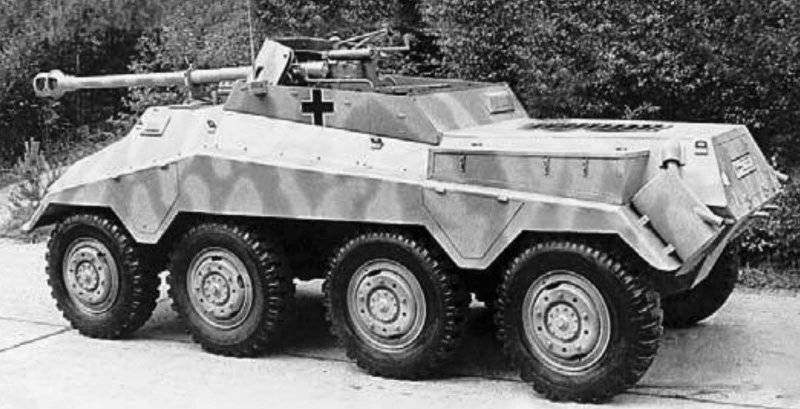
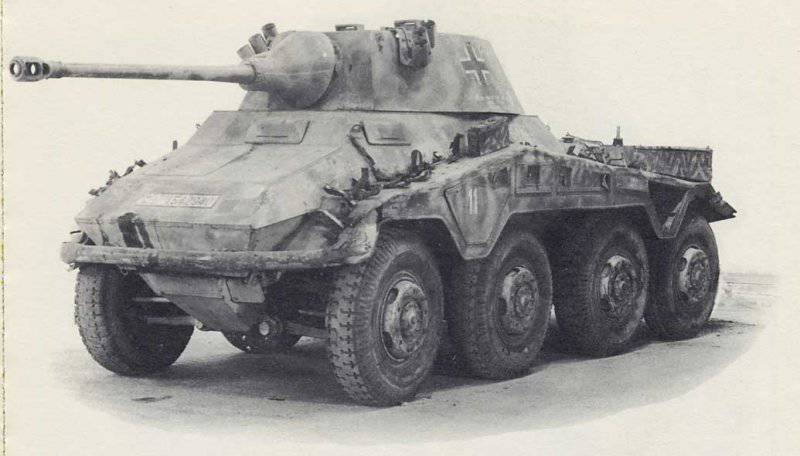
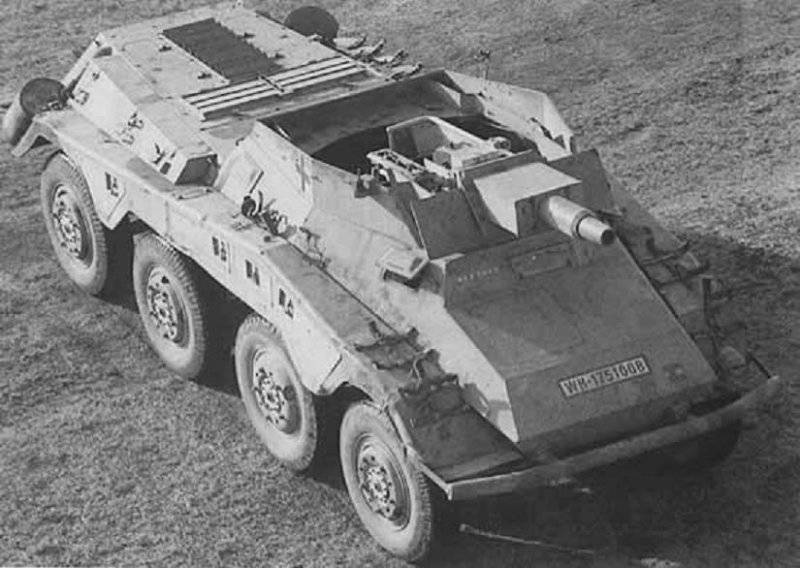
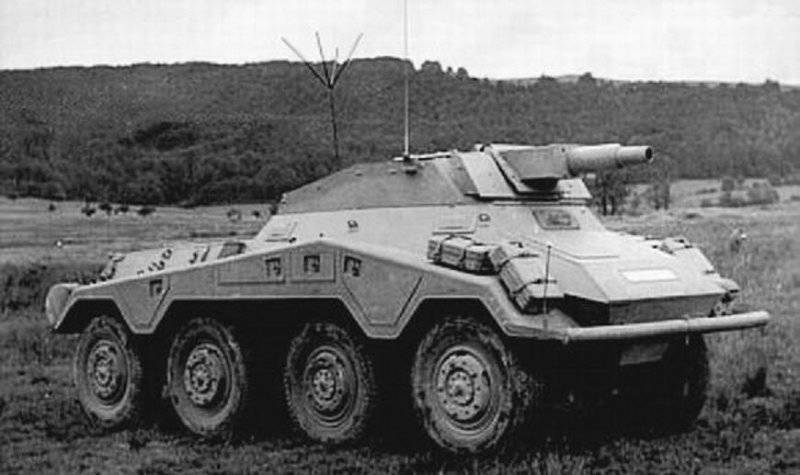
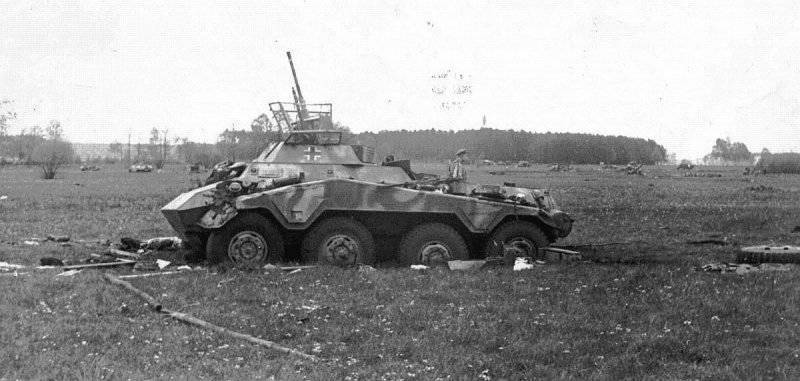
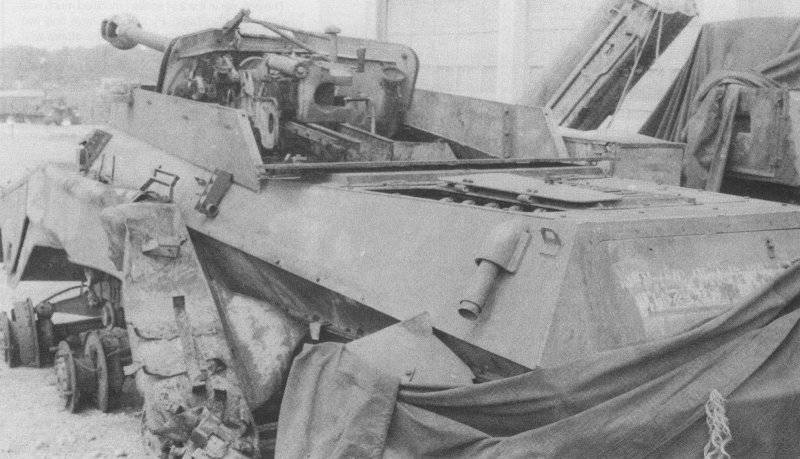
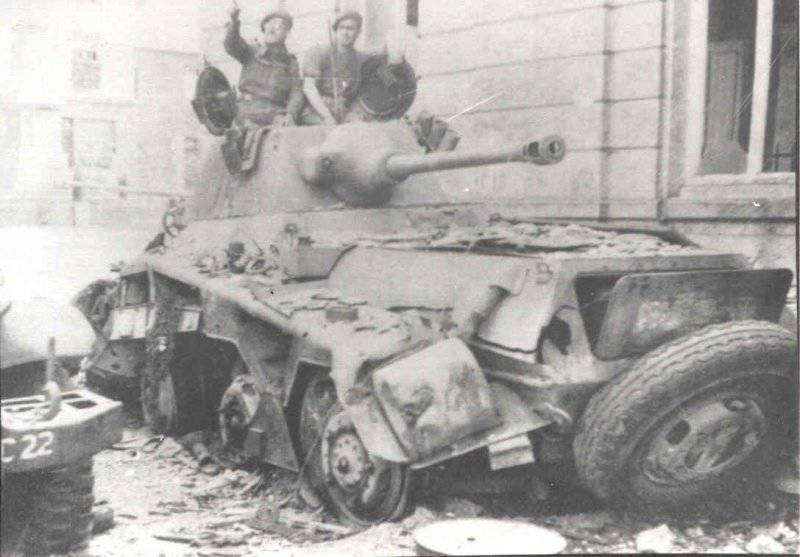
Information